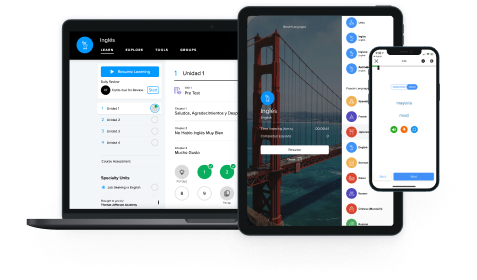You cannot include verbs in extended adjective constructions. Though participles and other words derived from verbs are allowed, verbs themselves never show up in these constructions.

What are extended adjective constructions in German?
In German, extended adjective constructions (aka “extended modifiers”) are multi-word phrases that act like an adjective and appear before the noun they describe. If you like unbelievably long and complex German sentences, these constructions are for you! Compare:
- Normal adjective:
Der gepackte Rucksack steht am Pier.
The packed backpack is standing on the pier.
- Extended adjective construction
Der gestern Abend von mir und meinem Vater sorgfältig gepackte Rucksack steht am Pier.
The backpack that was carefully packed last night by me and my father is standing on the pier.
lit. The last-night-by-me-and-my-father-carefully-packed backpack is standing on the pier.
In English, long extended adjective constructions like these aren’t generally allowed, so you’ll usually see them translated using a that-clause, as in the example above. But in German, they sound totally fine. Let’s learn more about how to use extended adjective constructions!
Extended adjective constructions: The basics
In German, an extended adjective construction is formed by adding modifiers before an attributive adjective (the sort of adjective that precedes a noun).
rauschende
rustling
in den Abendstunden geheimnisvoll rauschende
mysteriously rustling in the evening
In a sentence, the entire extended adjective appears in the same position where a plain attributive adjective would appear: after the (e.g. article, possessive adjective, demonstrative,...) and before the noun it modifies.
der rauschende Wald
the rustling forest
der in den Abendstunden geheimnisvoll rauschende Wald
the in-the-evening-mysteriously-rustling forest
And as usual, a determiner is not always required:
rauschende Wälder
rustling forests
in den Abendstunden geheimnisvoll rauschende Wälder
the in-the-evening-mysteriously-rustling forests
Let’s look, now, at the internal structure of those adjective constructions. What kinds of adjectives can they be built around? What kinds of modifiers can they take? What order should you use for those modifiers? Read on to learn more!
What kinds of adjectives can you use in extended adjective constructions?
Many extended adjective constructions are built around participles, but not all of them! Let’s look at some extended adjective constructions based around , , and “classic” (non-participle) adjectives, to give you an idea of the differences!
Extended adjective constructions with a present participle
An extended adjective construction built around a present participle usually describes an ongoing action that the noun is engaged in. You’ll usually translate these into English with a and a verb in its “be verbing” form.
extended adjectivedie flink über Fels und Stein springende Gämse
the mountain goat that is nimbly jumping over rocks and stones
However, sometimes, if the present participle is immediately preceded by zu(to) the extended adjective can be better translated using a (e.g. “to be verbed”):
- simple adjective
Pdas zu erwartende Gewitter
the thunderstorm that is to be expected
- extended adjective
das in den nächsten paar Stunden zu erwartende Gewitter
the thunderstorm that is to be expected in the next couple hours
lit. the in-the-next-couple-hours-to-expecting thunderstorm)
Extended adjective constructions with a past participle
An extended adjective construction built around a past participle will typically describe an action happened to the noun and has been completed. You can generally translate these into English with a that uses a verb (“be verbed”).
extended adjectivedie von unserem Elektriker gestern Abend reparierte Seilbahn
the cable car that was repaired last night by our electrician
lit. the by-our-electrician-last-night-repaired cable car
However, if you use the past participle of a verb that doesn’t take an object, these are translated using the active voice, usually past tense, instead.
- simple adjective
der aufgestandene Wanderer
the hiker that got up
- extended adjective
der wegen des lauten Vogelgesangs schon früh um 5 Uhr aufgestandene Wanderer
the hiker that got up at 5 AM already because of the loud birdsong
Extended adjectives with non-participle adjectives
Though many extended adjective constructions will be built around participles, it is just as possible to build them around “classic” adjectives that are unrelated to a verb. Usually these will be translated using a relative clause involving a like “to be.”
extended adjectiveseine nach der Wanderung im Gebirge sehr müden Füße
his feet that are very tired after the hike in the mountains
lit. his from-the-hike-in-the-mountains-very-tired feet
wegen vieler historischer Häuser sehr malerische Dörfer
villages that are very picturesque because of the many historic houses
lit. because-of-many-historic-houses-very-picturesque villages
What kinds of modifiers can you use in extended adjectives?
It sure looks as if one can put pretty much anything in that vast space before an attributive adjective, doesn’t it? Well, that’s more or less right, but not quite: there are rules on what types of words and phrases can be used to form an extended adjective construction. Let’s take a look:
the of a participle in the accusative case:
direct object (accusative)adjective (participle)der einen steilen Weg hinauf kletternde Mann
the man that was climbing a steep path
the of a participle in the dative case:
indirect object (dative)adjective (participle)der ihm von seiner Oma für die Wanderung geschenkte Rucksack
the backpack that was gifted to him by his grandma for the hike
a genitive attribute, i.e. a possessor or source in the genitive case:
genitive attributeadjectiveder sich der Gefahren des Gewitters nicht bewusste Wanderer
the hiker that was not aware of the dangers of the thunderstorm
→ In English a genitive attribute is usually a noun that ends in the possessive -’s or a noun that follows “of”.- adverbadjective
der überraschenderweise wunderschöne Ausblick
the surprisingly lovely view
Adverbial phrases describing a time, reason, manner, or place:
adjectiveadverbial phrasedie heutzutage wegen der Umweltverschmutzung in den Alpen sehr seltene Bergziege
the mountain goat that is very rare in the Alps nowadays due to the environmental pollution
Additional adjectives, describing either the main noun or describing one of the object nouns
adjectivesecondary adjectivedie im Mittelalter zerstörte alte Burgruine
the old castle ruin that was destroyed in the Middle Ages
Important
How to translate a German extended adjective construction: step-by-step
German extended adjective constructions can seem very long and daunting at first, so here are some helpful hints for reading and translating them. Let’s look at an example:
Meine um 20 Uhr von der langen Bergtour ziemlich erschöpft zurückgekommene Tante ist schon zu Bett gegangen.
Translate the main clause (without the adjective and its modifiers):
Meine Tante ist schon zu Bett gegangen.
My aunt has gone to bed already.
Translate the “main” adjective (the one that is directly in front of the noun). Depending on what sounds natural, you can use an adjective or a that-clause in English:
meine zurückgekommene Tante
my aunt that returned
Translate the “extensions” piece by piece, starting at the leftmost element:
meine um 20 Uhr zurückgekommene Tante
my aunt that returned at 8 pm
meine um 20 Uhr von der langen Bergtour zurückgekommene Tante
my aunt that returned at 8 pm from the long mountain tour
Translate the “extensions” piece by piece, starting at the leftmost element:
meine um 20 Uhr zurückgekommene Tante
my aunt that returned at 8 pm
meine um 20 Uhr von der langen Bergtour zurückgekommene Tante
my aunt that returned at 8 pm from the long mountain tour
meine um 20 Uhr von der langen Bergtour ziemlich erschöpft zurückgekommene Tante
my aunt that returned rather exhausted at 8 pm from the long mountain tour
Important
The order of the modifying elements may be different in English vs. German. That is okay and expected! Just make sure your translation makes sense in English.
Want to use extended adjective constructions yourself? Start by writing a sentence with an attributive adjective, then add more information step-by-step—the process described above can also help you make your own very long extended adjective constructions.
How long can an extended adjective construction be?
Theoretically, there is no limit to how long an extended adjective construction can be, though practically, it would make a sentence fairly incomprehensible if a single adjective in a sentence is extended by more than say… four or five phrases.
Since you might run out of breath or forget where you started, extended adjective constructions are typically not that common in spoken German, but they are very common in the written language. Look for them in newspaper articles and literary works.
And here, just for you, is the longest extended adjective construction your author could think of! 😮
Meine letztes Jahr, während einer stürmischen Nacht gegen 9 Uhr abends ganz ohne offensichtlichen Grund plötzlich und ohne eine Spur zu hinterlassen, aus unserem Garten verschwundene Katze ist diesen März überraschend im Tierheim wieder aufgetaucht.
My cat that disappeared from our garden suddenly and without leaving a trace last year during a stormy night around 9 pm in the evening completely without an obvious reason surprisingly reappeared in an animal shelter this March.
lit. My last-year-during-a-stormy-night-around-9-at-night-for-no-apparent-reason-suddenly-and-without-leaving-a-trace-out-of-our-garden-disappeared cat…
Summary
Extended adjective constructions allow us to provide more detailed information about nouns and adjectives by placing descriptive information directly before an attributive adjective. Here are the most important points to remember:
Extended adjective constructions are multi-word phrases that act like attributive adjectives: they come after the and before the noun. The adjective itself will come directly before the noun.
Extended adjectives are most common in written German.
Most often, you’ll need to translate extended adjective constructions into English using a relative clause. Don’t forget to review the translation tips we gave you to help you translate them accurately!
Extended adjective constructions can be constructed around present participles, past participles, or “classic” adjectives (ones with no relation to a verb)
Ready to practice? Check out these German extended adjective activities to test your skills!
